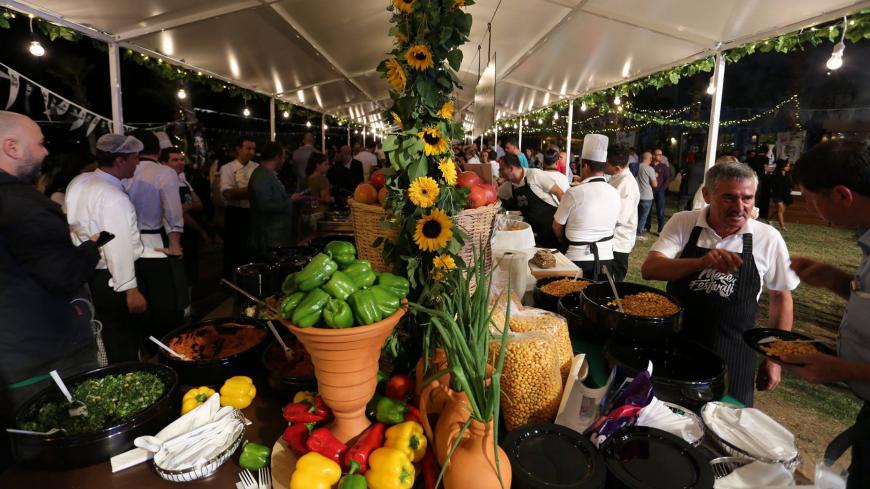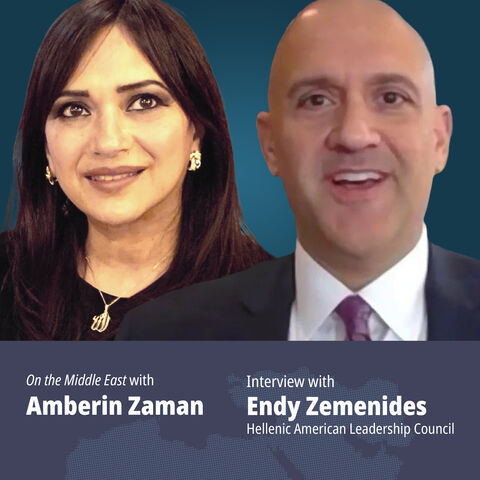The word “meze” refers to a selection of cold and hot appetizers served in the Middle East, the Balkans and parts of Central Asia. While meze was part of all the cuisines in the Ottoman Empire, the word does not originate from one of the languages used in the Empire — Turkish, Arabic or even Greek — but has its roots in the neighboring Persian Empire. The Persian word “maze” means “taste or snack,” and “mazidan” means “to taste."
It is not known exactly how mezes spread across the region or where the first meze was served, but it is a shared cultural heritage that can be traced back to different countries. Mezes often complement the consumption of alcoholic drinks, such as the popular anise-flavored drink known as raki, rakia, arak, ouzo, tsipouro or mastika, depending on the country where it is served. Cold and hot mezes are served as a starter or as a full meal.
In mid-September, the first international Meze Festival of Turkey took place in the southwestern city of Antalya, bringing together around 50 cooks and 25 restaurants from Turkey, Greece and Lebanon to display the large number of mezes served in the region.
The Barut family, which runs the Akra Barut Hotels, organized the festival in order to put Antalya on the culinary map and show how gastronomy can bring together neighboring countries. Antalya, whose historic city center, Kaleici, is on UNESCO's tentative World Heritage List, has a rich history of agriculture. The city, an important port since Roman times, has been the intersection of many cultures and a point of exchange, through its port, for different foodstuffs.
Nurettin Tolga Atalay, a food and beverage consultant and the owner of the Solid Consulting Group who selected and organized the participating restaurants for the festival, told Al-Monitor, “Meze culture is a culinary heritage of the lands where religions and civilizations were born; a shared language of all the peoples in this region; a cornucopia of simple and satisfying tastes steeped in history enduring all the turmoil of the past.”
The one-day Meze Festival held at the Akra Barut Hotel in Antalya Sept. 14 explored the potential of cultural exchange between countries and cities and also revealed the city's past. More than 100 mezes were served, from all-time classics and regional specialties to more daring creations. Antalya-based participant Tirmisci Bilo only offered one meze: "tirmis," or lupin beans, also known as the Jewish fava bean or atramus in the Ladino language. The earliest records of this highly toxic bean date back to the Egyptian Pharaohs. A popular snack of the Romans, today it is still enjoyed in Italy. Only edible after detoxing the beans in brine for several days, in Turkey the beans are only consumed in Antalya, bearing the name of the Arabic origin “termes.”
The other bean variations in the mezes were indicative of many historic interactions. Trendy Athens restaurant Gaspar offered another kind of bean meze, also known as "fava," but quite different from the fava bean puree found in Turkey — both in taste and texture, likely due to the use of split peas. Bodrum restaurant Komodor served "gambilya favasi," which is a rarity in Turkey, because the dish is made of split peas instead of fava beans. This dish is similar to the Greek one, lacking the usual distinctive flavor of the fava beans, but bearing the blandness of the split peas used in Greece.
Baklaci Ibrahim, a festival participant from Hatay in southern Turkey, offered "bakla," stewed fava beans ("ful medames"), and Lebanese-style hummus, both dishes indicating a strong tie with Middle Eastern and Egyptian territory. The hummus served by Kasr Fakhreddine, a traditional Lebanese food restaurant in Beirut, was very different from the Turkish hummus, though this is no surprise, as the local recipe for this chickpea and tahini dip differs widely across the region. Kasr Fakhreddine also offered "yaprak sarma,” or “maḥshi waraq,” known as “dolmades” in Greece, which Turks call Istanbul-style stuffed vine leaves, a dish that is found from Algiers to Armenia, from the Balkans to the Middle East.
Festival participant Tusba, one of the most famous delicatessen shops in Istanbul renowned for its mezes and in particular Armenian specialties, offered three mezes: "muhammara," an Arabic meze made of pepper paste, bread crumbs, walnuts and spices; "topik," an Armenian dish of vegetable balls now served as a meze; and "cerkez tavugu," an Ottoman dish known as Circassian chicken, which is shredded chicken served cold in a walnut sauce.
All these meze variations show that food culture is beyond borders and food has the bonding power that unites the peoples of the Mediterranean.
“What else can bring countries together?” Atalay asked.








